Can You Build a Genius Light? A Fun Way to Teach Electronics to Kids
Are your kids interested in how things work? Do they get excited about electronics, electricity, circuits, and lights? Would they like to build their own electronic devices? I have a super fun way to teach electronics to kids to share with you. EEME sent us the Genuis Light project kit to review. Check out our experience below.
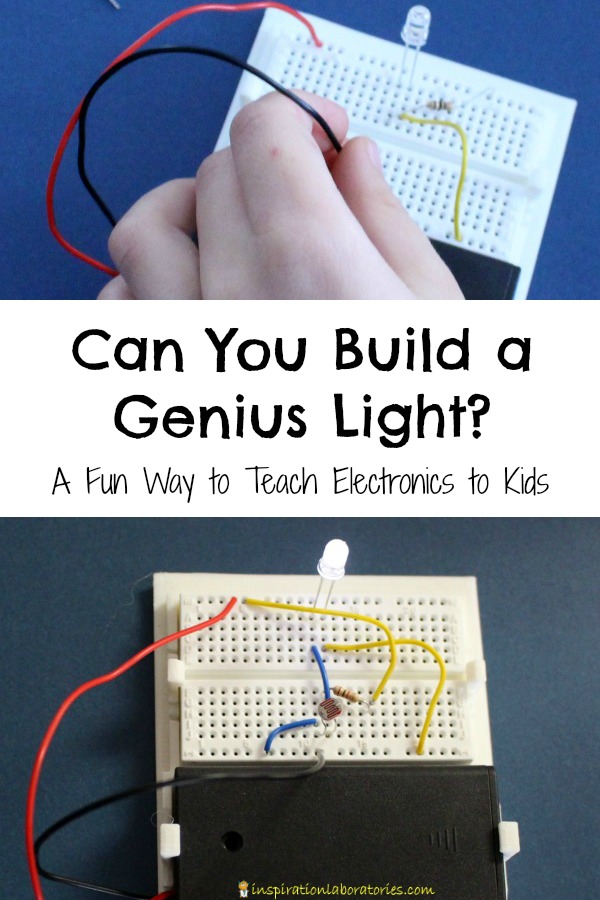
A Fun Way to Teach Electronics to Kids
Aiden (age 6) has been interested in circuits and electronics for a while now. We had been thinking about getting him a breadboard and other supplies to tinker. When EEME asked to send us one of their projects, I jumped at the chance. Each of their project kits comes with online lessons that teach you how to assemble the kit and learn how it works. It is an awesome introduction to electronics as it walks you through everything step by step. The lessons ask questions along the way to see if you’re truly understanding.
The Genius Light Project Kit
The project kit comes with a base, a breadboard, a battery pack, batteries, wires, resistors, an LED, and a photoresistor.
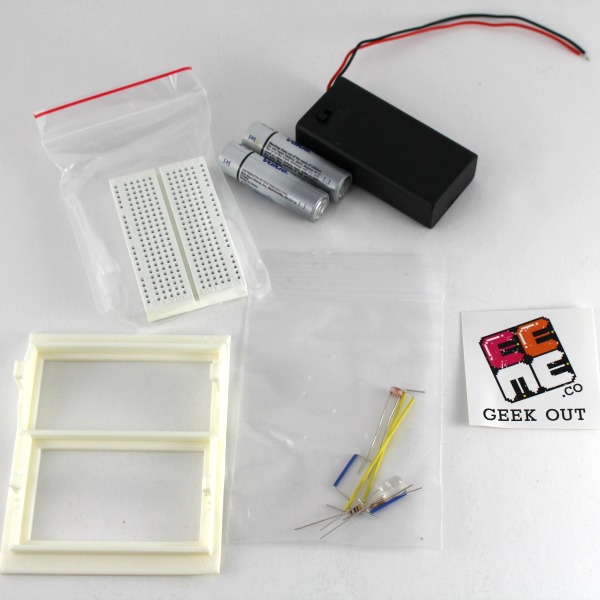
Start by adding the breadboard and battery pack to the base.
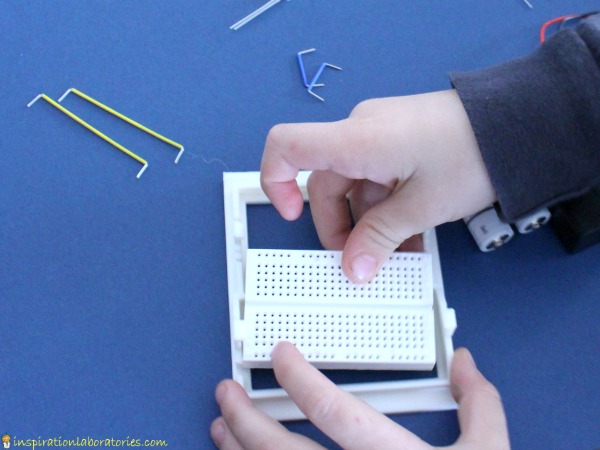
Follow the video direction for creating a simple LED circuit on the breadboard. We found it helpful to pause the video to complete a step and then continue watching. I watched everything along with Aiden, but he worked on it all himself. There were a couple times he needed help putting in the short resistors, but that was it.
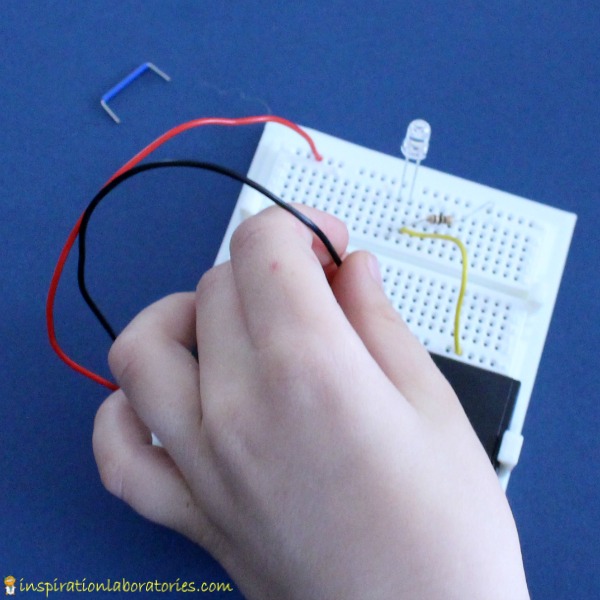
Turn on the battery and watch the LED light up!
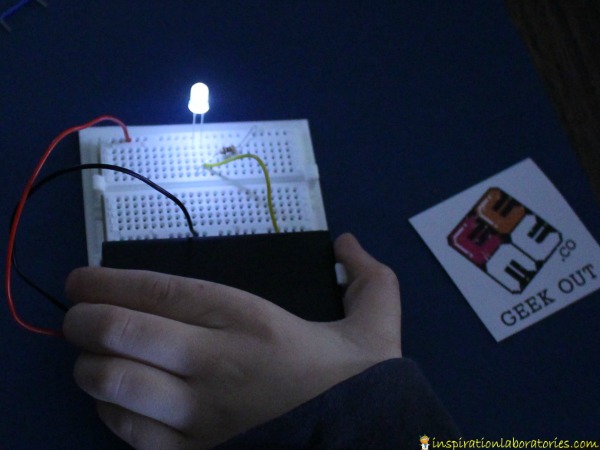
Next, the lesson walks you through making changes to the circuit. What happens if you put this wire here or add an extra resistor? Will the LED still light up? Will it be dimmer?
After exploring simple circuits for a while, the lesson continues with building the genius light circuit. Basically, you add a photoresistor to the circuit that causes the LED to light up when it is dark and dim when it is light. This is how most night lights in your bedroom work. There is a light sensor that affects how the circuit works.

Aiden thought this was the coolest project. The estimated project build time is 1.5 – 2.5 hours. We worked through the whole thing in one sitting in about 1.5 hours. When we were finished, Aiden was ready to build some more. We’re excited for our next project.
Head over to EEME’s website and check out their free electronics lessons in addition to their paid project kits and subscriptions.
Be Inspired by a Book
There are two books that we’ve read recently that go perfectly with learning about electronics. Amazon affiliate links are included below.
Night Lights by Susan Gal works especially well with the Genius Light project. The Genius Light is exactly how a night light in your room works. Reading this book opens up great conversations about the different types of lights we see. How many of them are electronics based? How many of them have circuits and wires? Are there different types of light bulbs and power sources? The Night Lights
book is relatively simplistic – it just names different types of lights you see at night and shows pictures of each one. I still think the book holds merit to inspire questions. My son enjoyed the book although my husband thought it was too simple.
Now & Ben: The Modern Inventions of Benjamin Franklin by Gene Barretta is an interesting look at Ben Franklin’s inventions. It compares things we use today with Franklin’s original version. It talks about Franklin’s lightning rod and compares it to today’s electricity. What will you invent?
More Electronics Projects for Kids
- Make Your Own LED Robot Toy – use your knowledge of LED circuits to make the eyes light up.
- Create a Push Button Light Up Card – learn how to add an LED light to a greeting card
- Did you know you can make circuits with play dough? Science Sparks shows us how.
Storybook Science Series
This post is a part of the Storybook Science series. Every day in March, bloggers will be sharing science activities inspired by a book. Be sure to follow along!
Subscribe to the Inspiration Laboratories weekly newsletter. Each issue has exclusive hands-on science explorations for children, a recap of our latest activities, and special resources selected just for you!
![]()



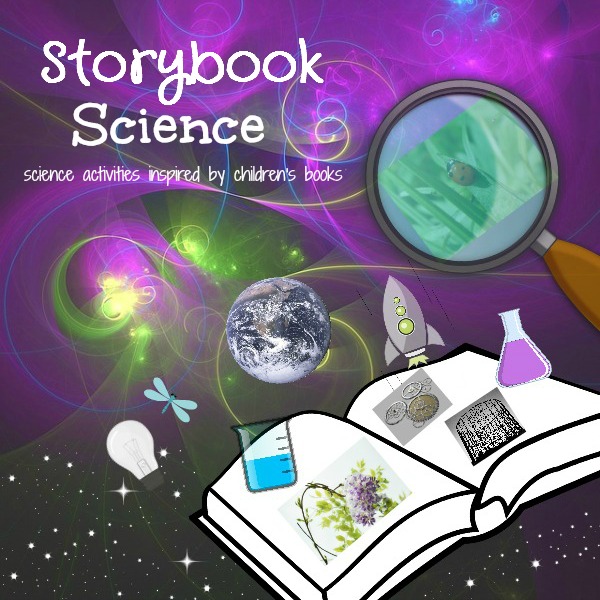
Leave a Reply